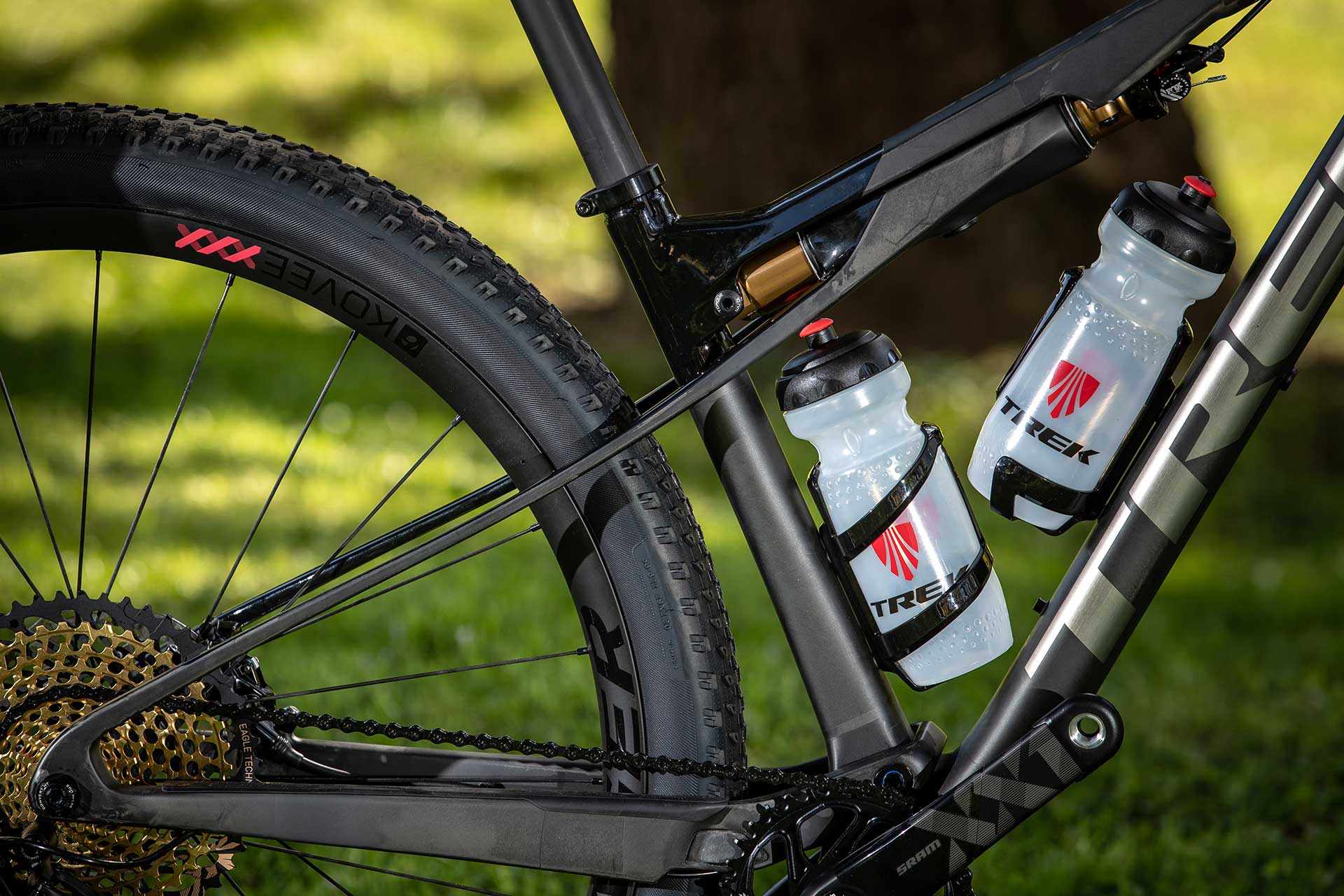
As World Cup race courses get more technical, with less and less chance to recover between ‘features’, the big question in top level cross country racing is whether to go full suspension, or to keep with a lighter and stiffer hardtail. Well, the new Trek Supercaliber is here to provide racers with the best of both worlds.
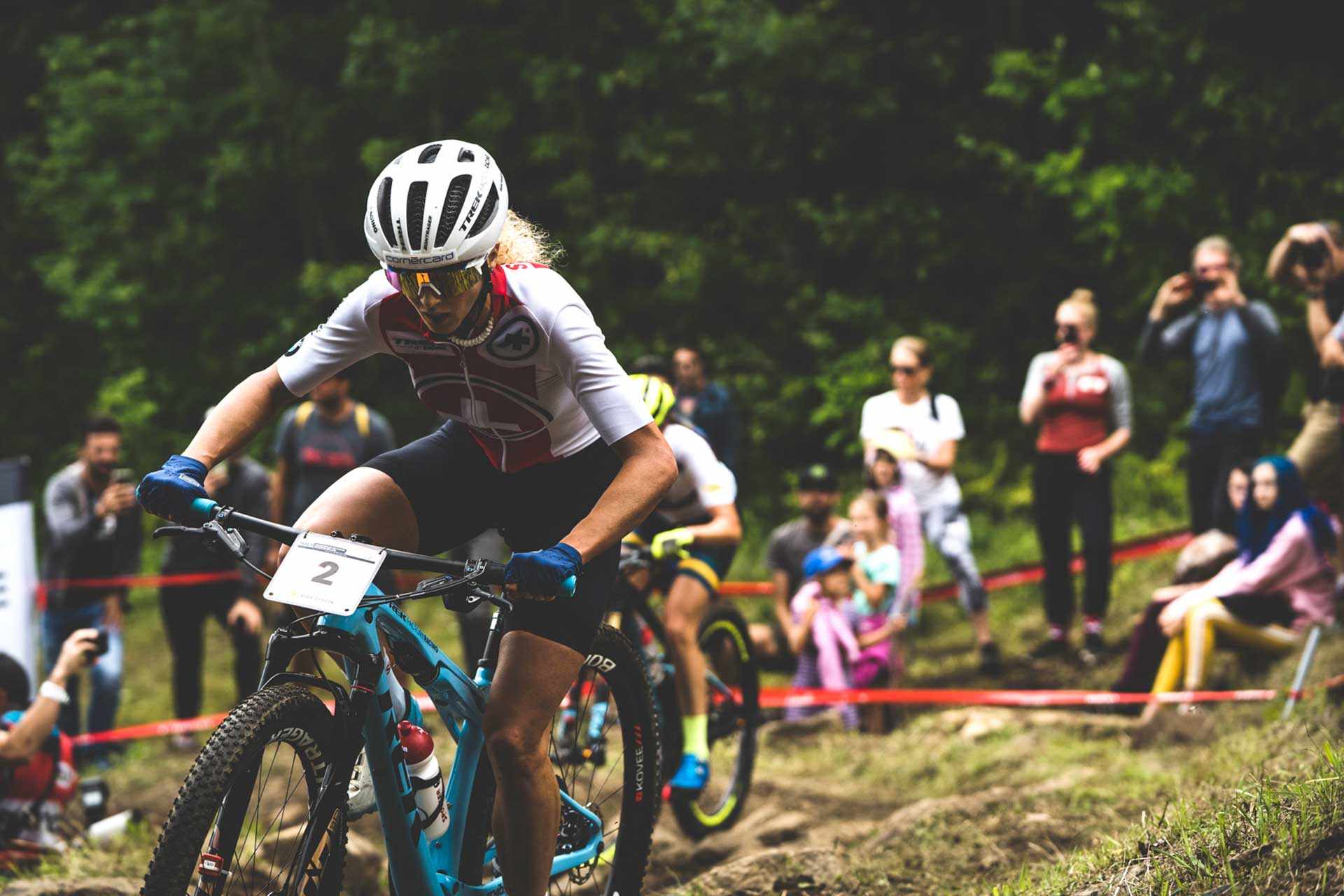
The new Trek Supercaliber has been a badly kept secret all year, with Trek’s top racers like Yolanda Neff and Emily Batty racing on disguised prototypes with a neoprene sock on the top tube, covering all the good bits. Yolanda Neff was even racing at last week’s World Championships (without sock…) although the official launch is today.
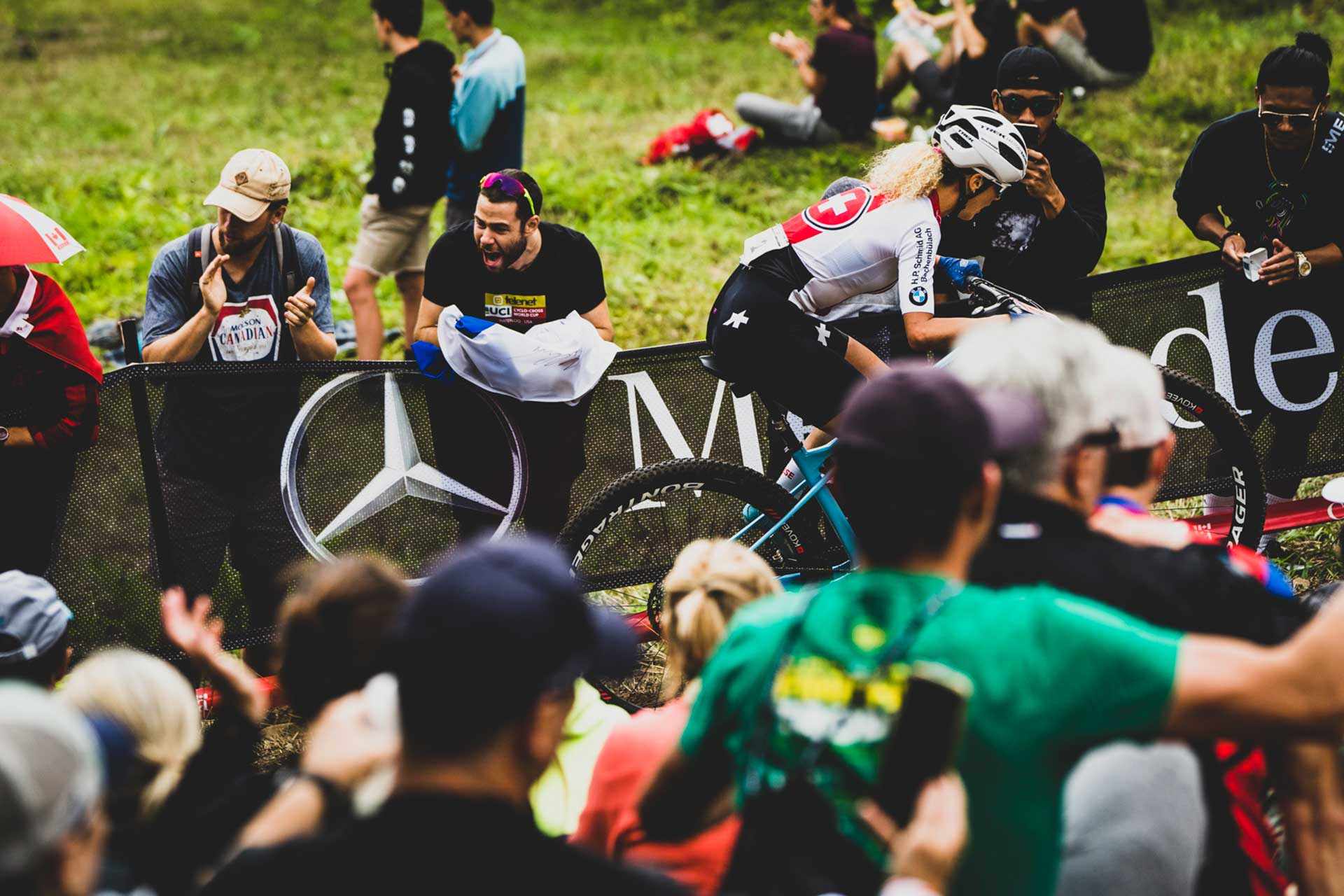
So, finally, officially, we can tell you all about the 2020 Trek Supercaliber race bike. It features 100mm travel up front and 60mm of rear suspension.
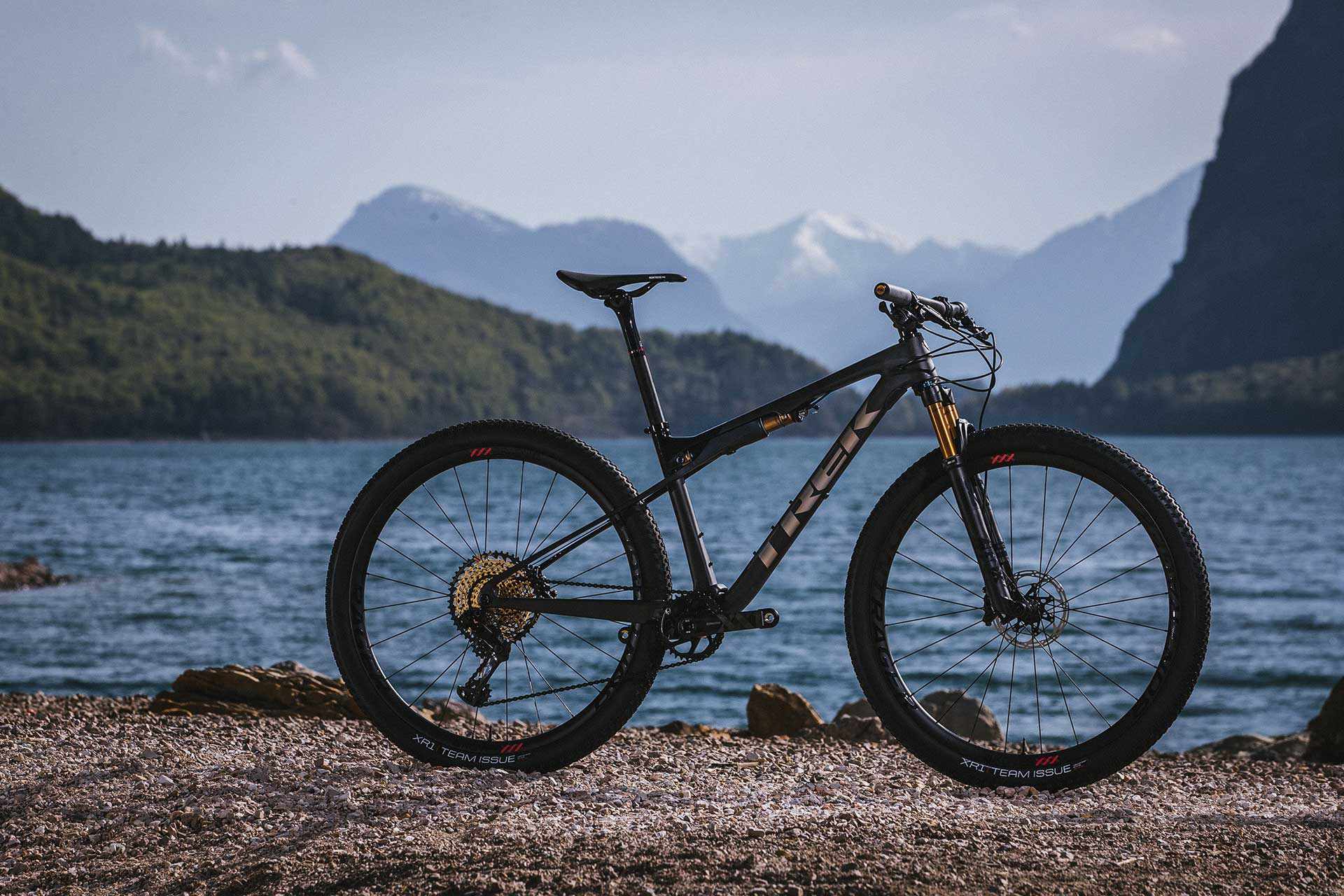
The new Supercaliber features all sorts of quirks that make it definitely stand out from other linkage suspension bikes.
The big feature is the Trek ‘IsoStrut enabled by Fox’ which sort of looks like a suspension fork stanchion mounted under the top tube. We’ll get to that in a minute. Looking at the rest of the components in the system, there’s what looks like a pivotless rear end, with the seatstays flexing as the shock compresses – but if you look closely, there’s actually a pivot at the base of the seat tube. Trek’s engineers decided that the lower BB pivot needed to be an actual pivot.
Latest Singletrack Merch
Buying and wearing our sustainable merch is another great way to support Singletrack
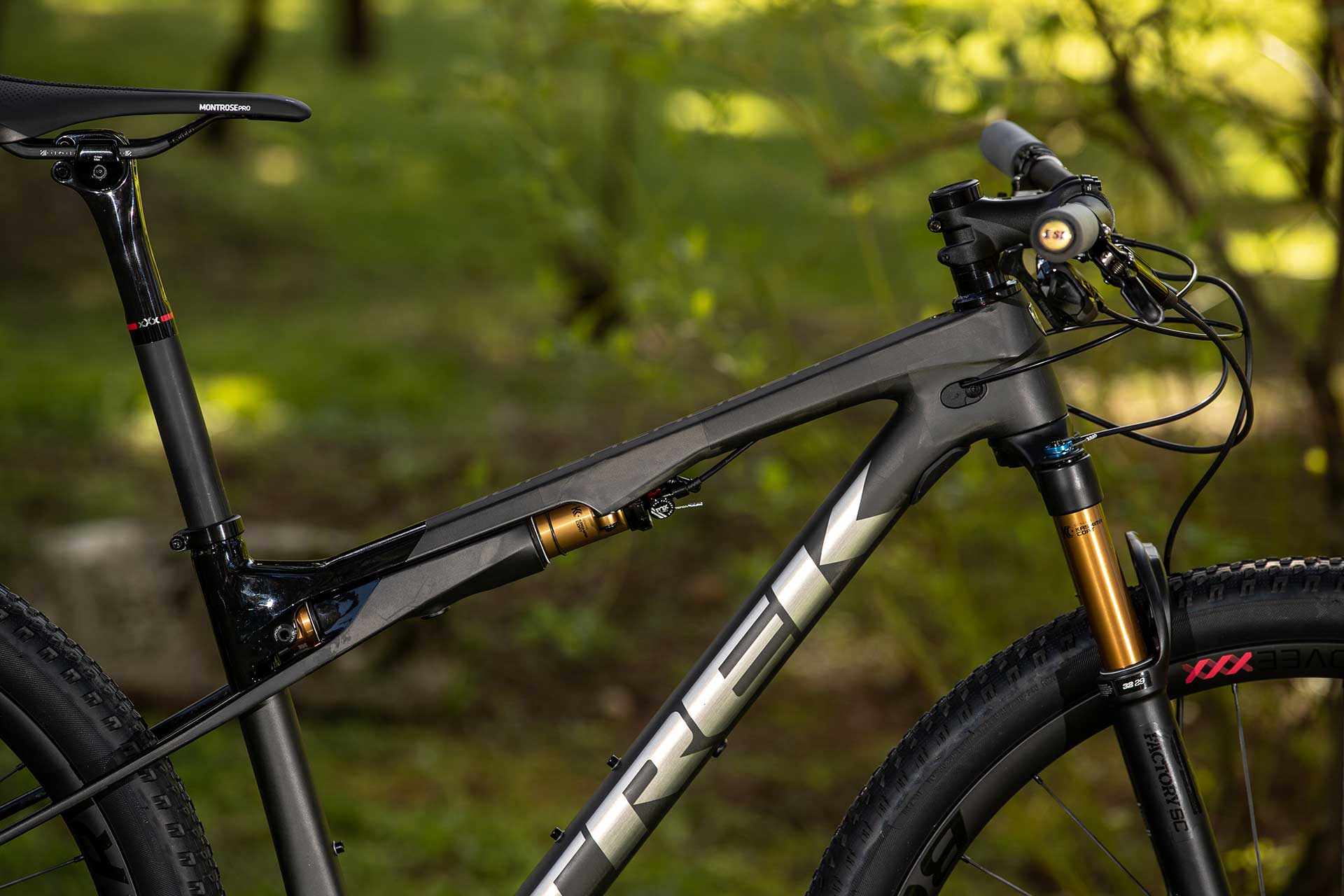
Trek has been working on this bike for about three years and there has been a lot of work – and some very ugly prototypes along the way.

Original prototypes remind us of the 1990s Boulder Defiant, which had a shock in the top tube, but the Trek system is very different. In order to keep the rear axle (and therefore the wheel…) from twisting, the shock itself runs on fork style bushings, but the strut is slotted to hold a pair of locating pins that are effectively the lower shock bushings for the system. As the seatstay yoke pushes forward on these pins, they operate the rear shock in the way of a linear rear shock. Complicated to explain, but deviously simple in operation.
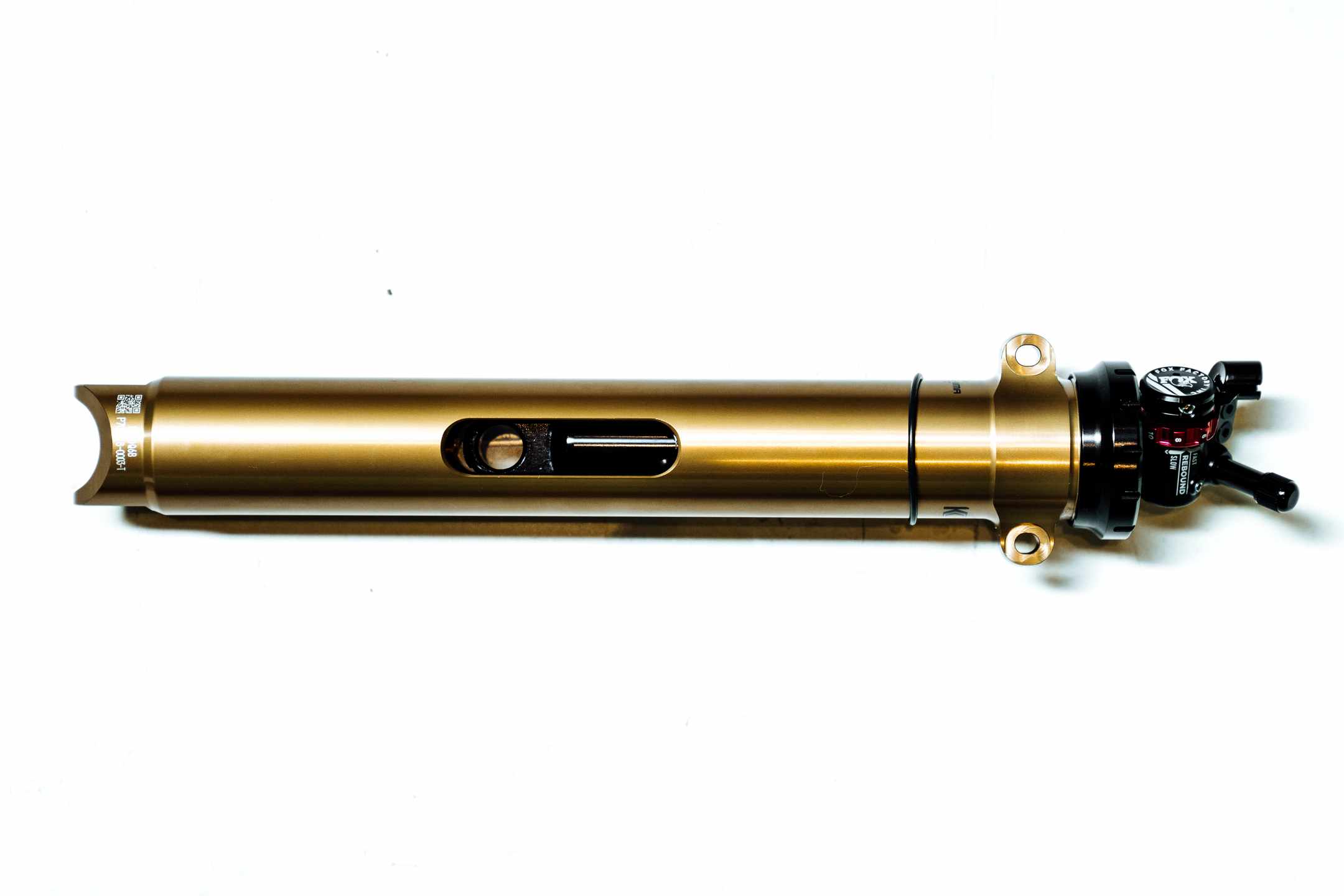
The Trek Supercaliber will come in 29in wheel only and in sizes from XS (15.5in) to XXL (23in) with an 18.5in M/L size in the middle to fit all of those average people out there. The bikes will feature many of Trek’s latest high tech features, including the Knock Block steering limiter and its Control Freak neat cable guides. There will be carbon wheels specced on all models and room for two water bottles. Hey, it’s a race bike!
The bike will be out this autumn, with custom ProjectOne paint finishes from November. Prices? UK prices will start at £4000, rising to £9200 for the top end Trek Supercaliber 9.9 XX1 AXS model. A frame only will be £3400.
More details can be found on the Trek US Supercaliber website.





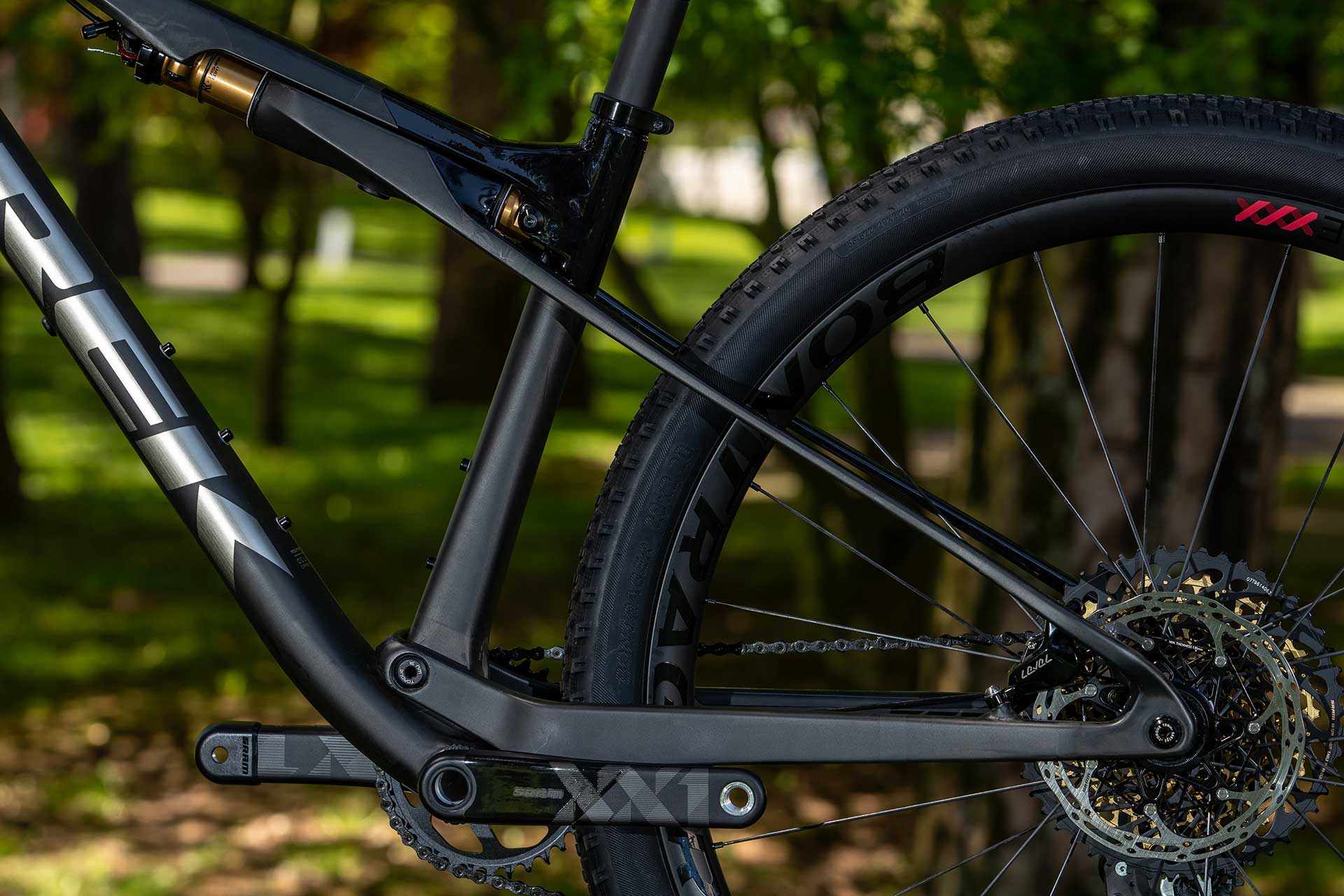
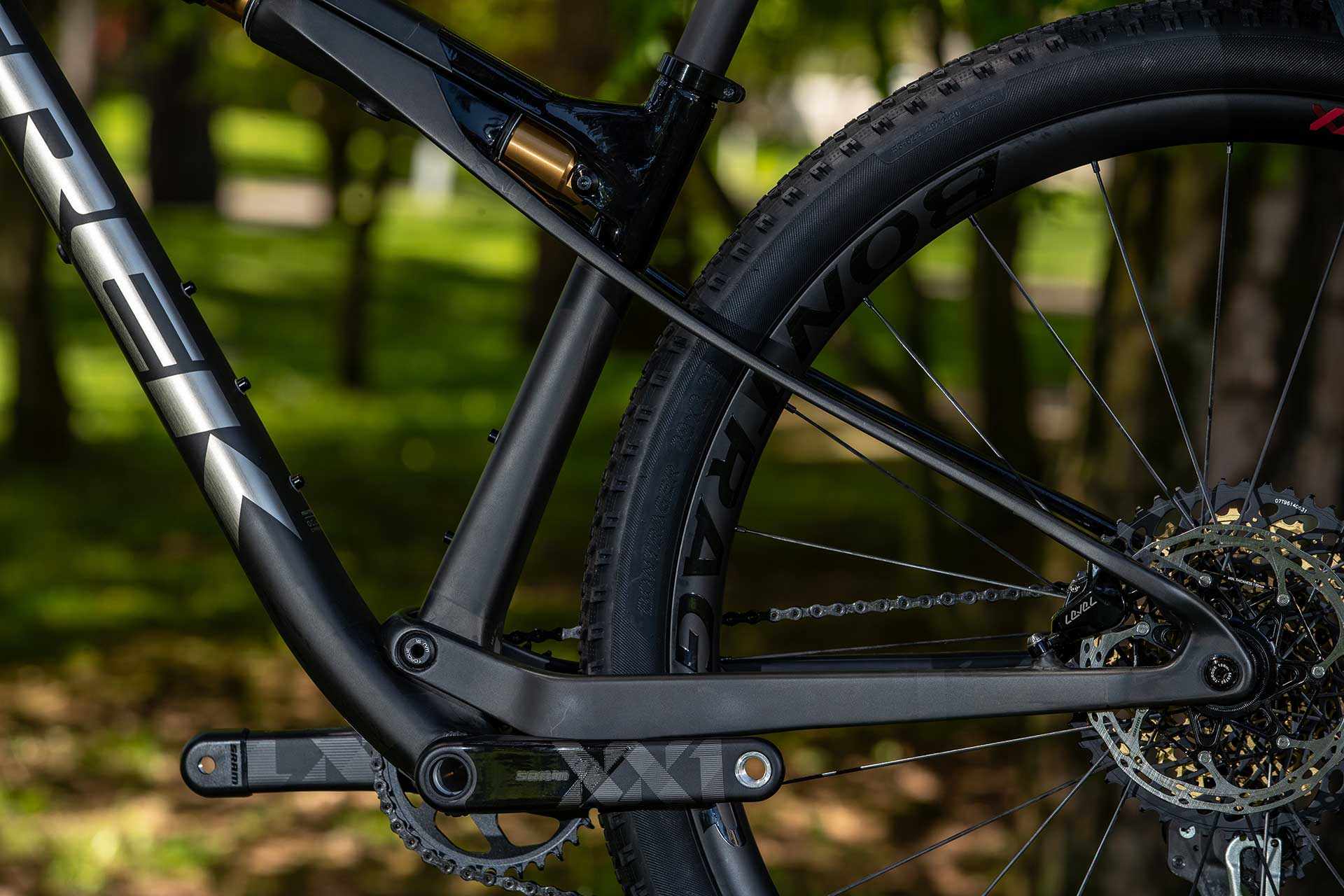
If, as I’ve read, it’s not significantly lighter than say a Scott Spark RC which has a bigger range of travel (100 – 70mm) what’s the point? You have a bike much heavier than soft tale but not as capable as FS bike with more travel. 60mm with no shock would be a different story.
Ya aren’t they claiming the frame with shock weighs 1,950g? Not specified frame size.. guess no pain with pivot bearing like on the scott and assume the frame flex at the back adds to the cushioning??